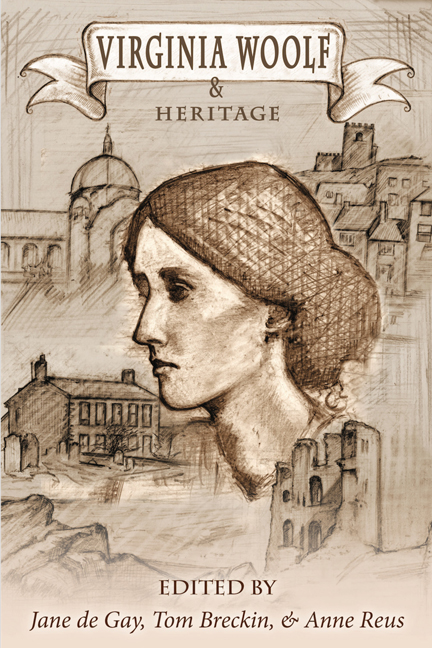Book contents
- Frontmatter
- Contents
- Introduction
- List of Abbreviations
- HERITAGE: A DEBATE
- HERITAGE, EDUCATION, AND MENTORING
- HERITAGE SPACES
- LITERARY AND CULTURAL HERITAGES
- QUEER PASTS
- Sex and Literary History in Orlando
- Queer Elizabeth: Early/Modern Feeling in Orlando and Elizabeth and Essex
- Persuading Rachel: Woolf and Austen's “little voyage of discovery”
- “The world…seen from this angle undoubtedly looks queer”: History, Heritage, and the Queer Domesticity of Between the Acts
- MODERNISM AND HERITAGE
- WRITING LIVES AND HISTORIES
- WOOLF'S LEGACIES
- FINALE
- Notes on Contributors
Sex and Literary History in Orlando
from QUEER PASTS
- Frontmatter
- Contents
- Introduction
- List of Abbreviations
- HERITAGE: A DEBATE
- HERITAGE, EDUCATION, AND MENTORING
- HERITAGE SPACES
- LITERARY AND CULTURAL HERITAGES
- QUEER PASTS
- Sex and Literary History in Orlando
- Queer Elizabeth: Early/Modern Feeling in Orlando and Elizabeth and Essex
- Persuading Rachel: Woolf and Austen's “little voyage of discovery”
- “The world…seen from this angle undoubtedly looks queer”: History, Heritage, and the Queer Domesticity of Between the Acts
- MODERNISM AND HERITAGE
- WRITING LIVES AND HISTORIES
- WOOLF'S LEGACIES
- FINALE
- Notes on Contributors
Summary
Virginia Woolf places Orlando at the intersection of certainty and doubt. To shore up certainty she opens the novel with the assertion that there could be no doubt about Orlando's sex and class. She then substantially erases the doubtfree certainty of the opening sentence and forces the reader into the novel's essential playfulness about sex and literary history. My paper concerns itself with this playfulness as it examines Virginia Woolf's review of literary heritage in Orlando which was published in the context of the scandal created by Radclyffe Hall's The Well of Loneliness. Woolf's playfulness is a response to the maelstrom generated by Hall's novel which had powerful figures like Stanley Baldwin, Winston Churchill, and Sir William Joynson- Hicks work to suppress it so as to prevent the spread of lesbianism. A few years later, in 1931, Freud published his essay on “Female Sexuality” which theorized lesbianism as the inability of the woman to move to sexual maturation. Nicole Ward Jouve suggests that the character of Orlando resists “the Freudian model where certain paths to masculinity and femininity need to be followed” (Roe and Sellers 267). We see that Orlando's name contains both “and” and “or” as Defromont points out and so Orlando dwells in gender multiplicity rather than singularity (ibid.). However, the resistance to Freudian narratives of normativity and to gender singularity is not strenuous in Orlando. Woolf's novel plays with notions of gender fluidity and queer sexuality only to hold them at bay via the playful tone and then to seemingly abandon them at narrative's end which features a heteronormative marriage framed by the idea of a wild goose chase.
Woolf sets up her playful tone and deflects attention away from any implication that she might be dealing with contemporary issues of sexuality with the Preface to the novel in which she self-situates within literary history. Jane de Gay points out, “[a]lthough there is some evidence of an ironic disdain for the weight of tradition… she also conveys a sense of intimacy with past literature” (132). The lists that Woolf draws up are personal—Julian and Adrian among others feature—and public as she records her debt to Defoe, Sir Thomas Browne, Sterne, Sir Walter Scott, Lord Macaulay, Emily Brontë, De Quincey, and Walter Pater among others.
- Type
- Chapter
- Information
- Virginia Woolf and Heritage , pp. 128 - 133Publisher: Liverpool University PressPrint publication year: 2017



